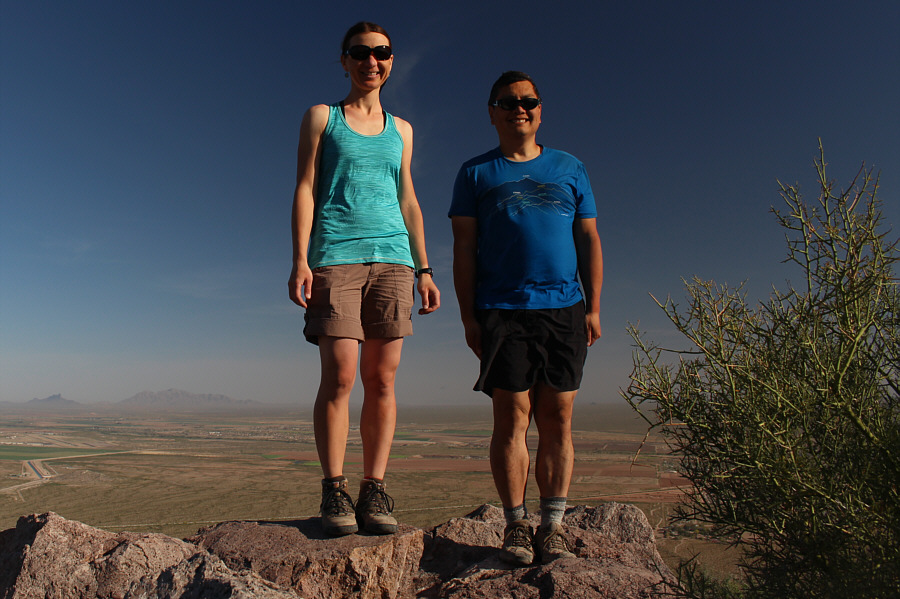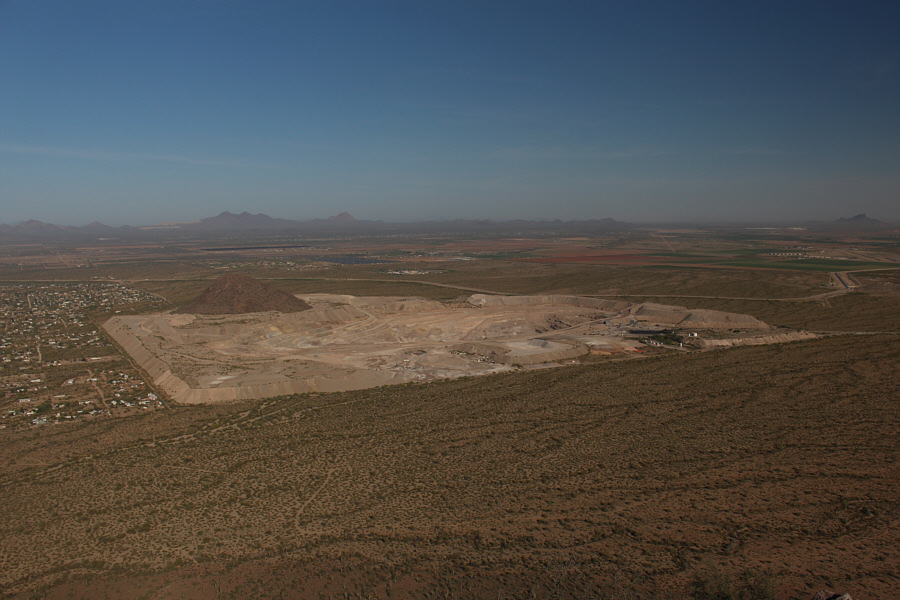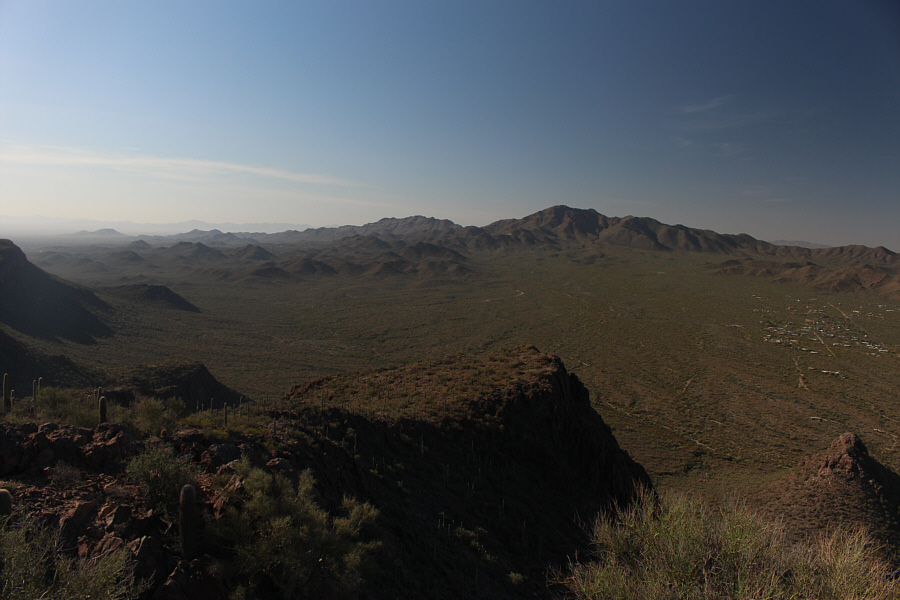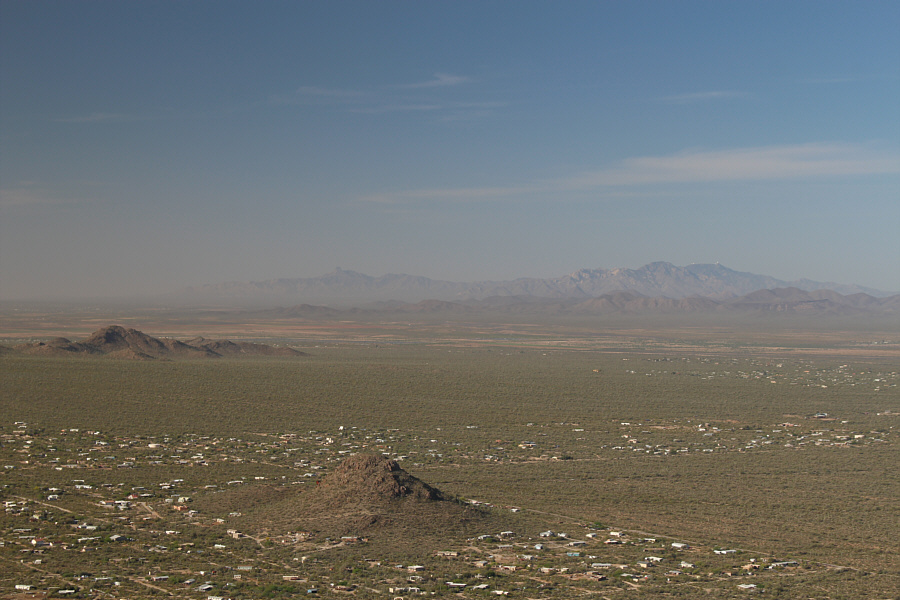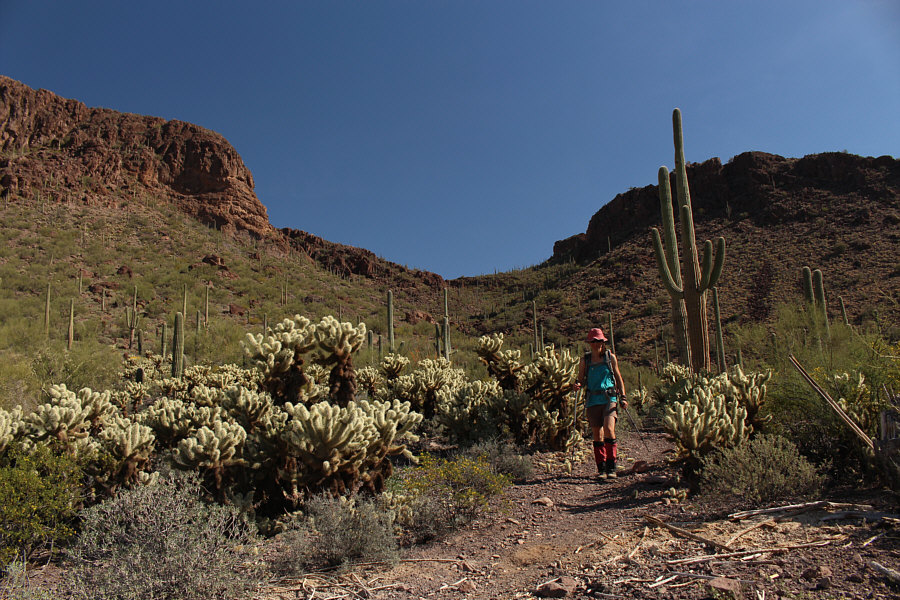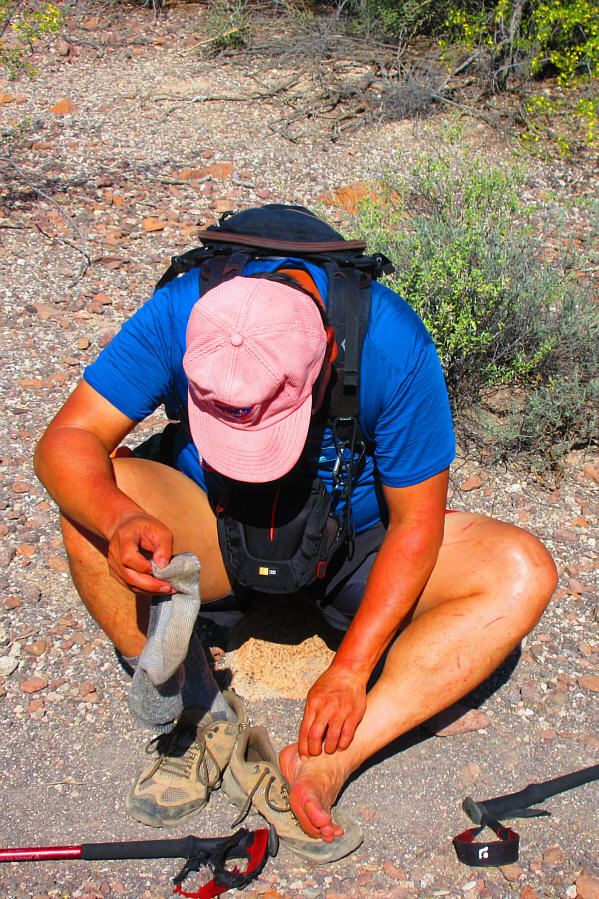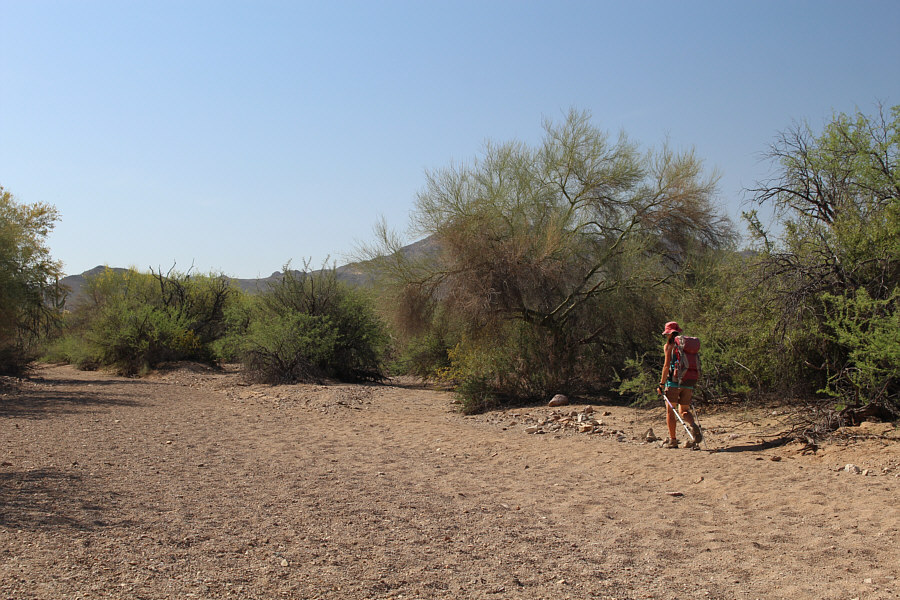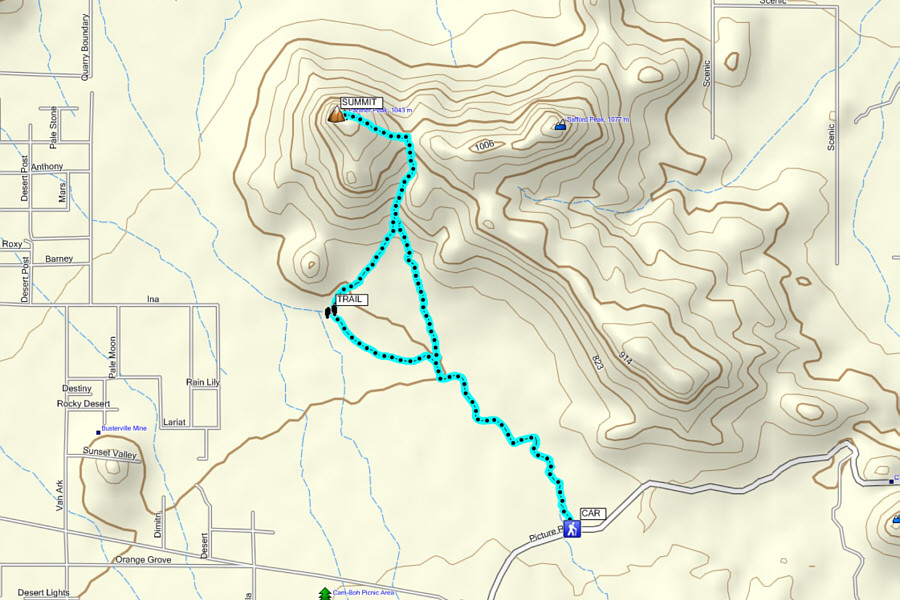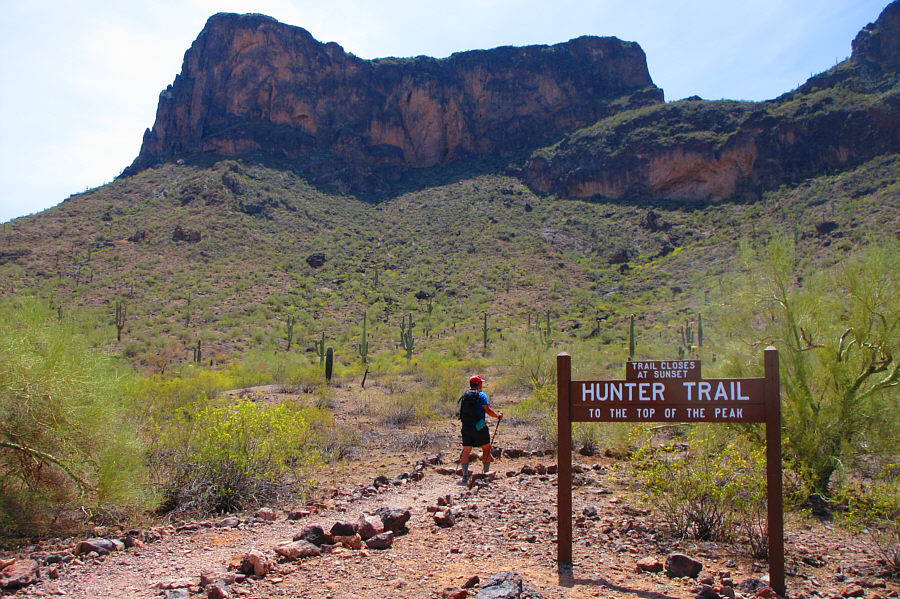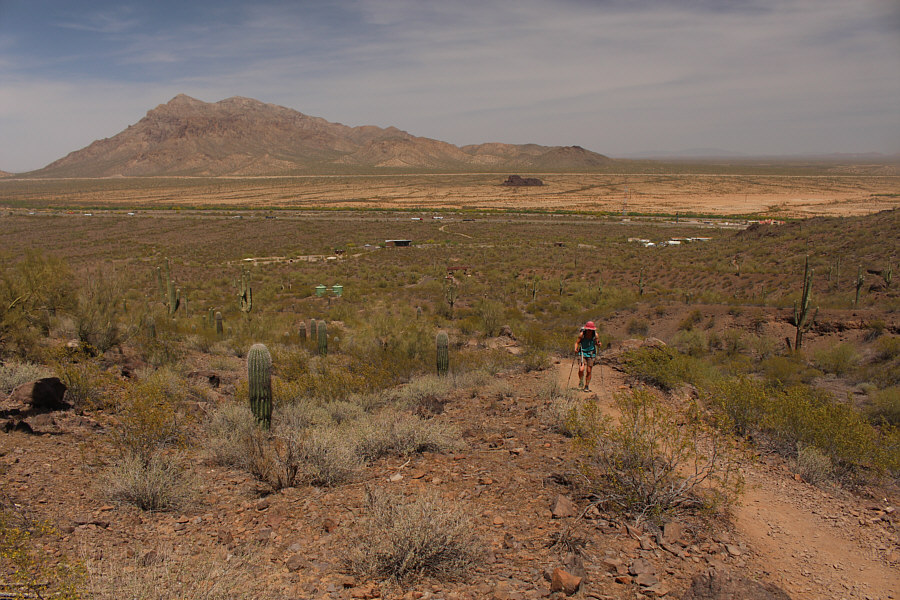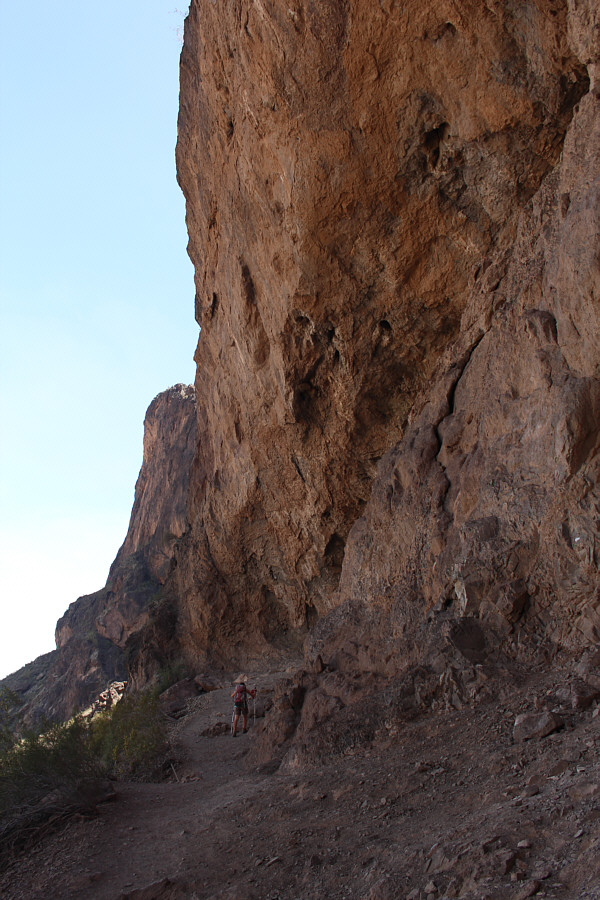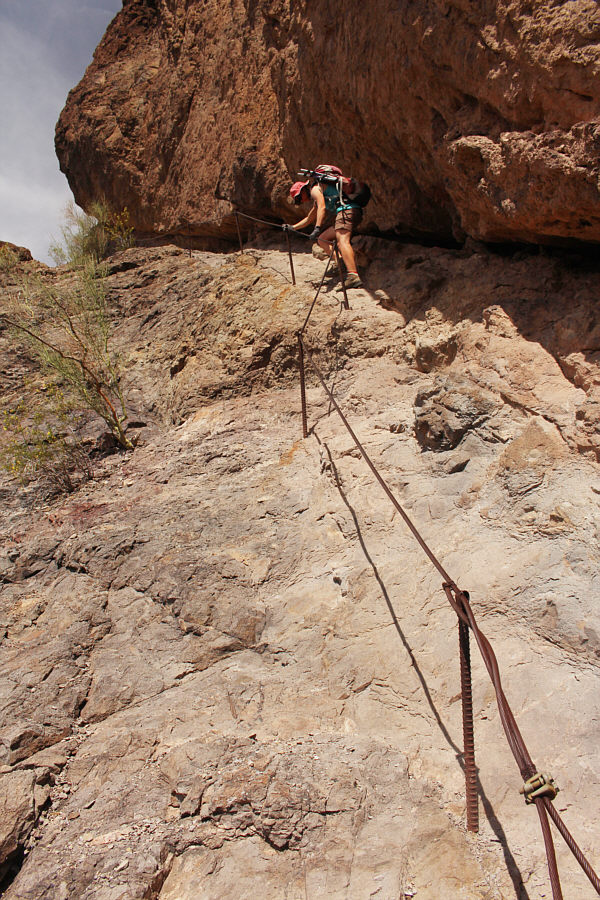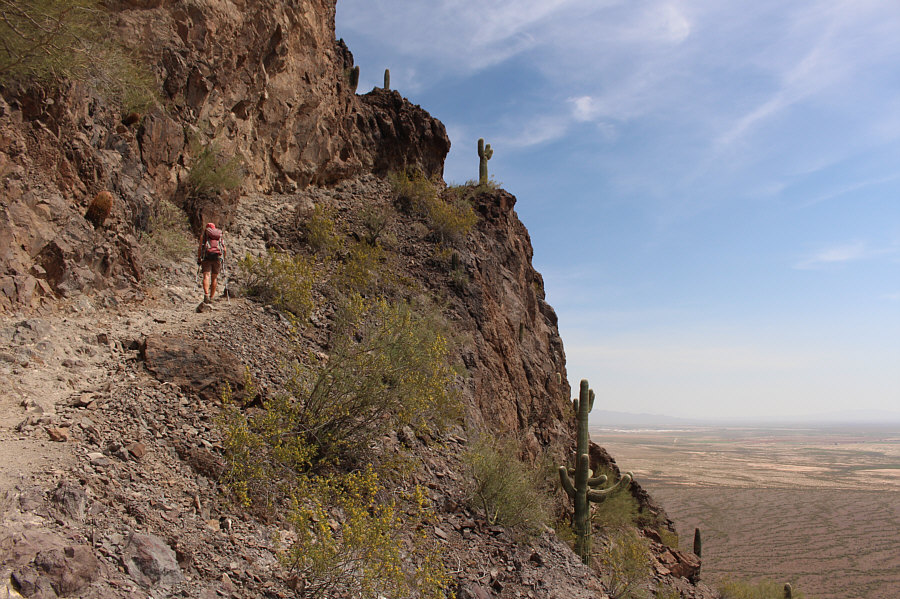On descent, we returned to the saddle and followed the trail back down to the bottom of the access gully. Instead of retracing our steps cross-country from there, we stayed on the good trail and found that it eventually intersects with Panther Peak Wash only about 800 metres further west of where we initially left it. Turning left, we followed the wash back to the trailhead under an increasingly hot sun.
 |
Panther Peak is visible at distant
right as Sonny starts hiking along the trail. Photo courtesy of Zosia Zgolak |
 |
The route to Panther Peak climbs up the obvious gully and the right-hand upper slope. |
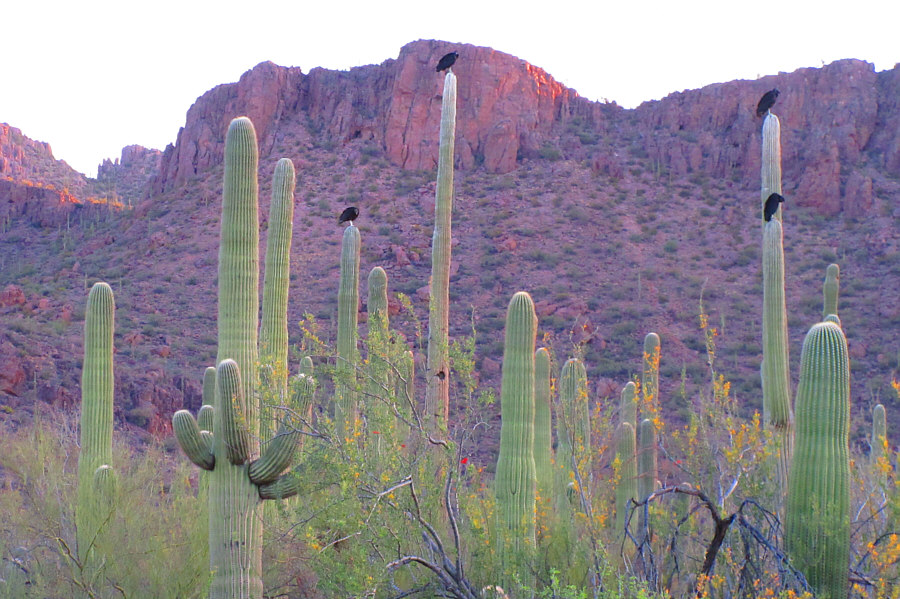 |
Some crows are curiously perched on
the tops of several saguaro cacti. Photo courtesy of Zosia Zgolak |
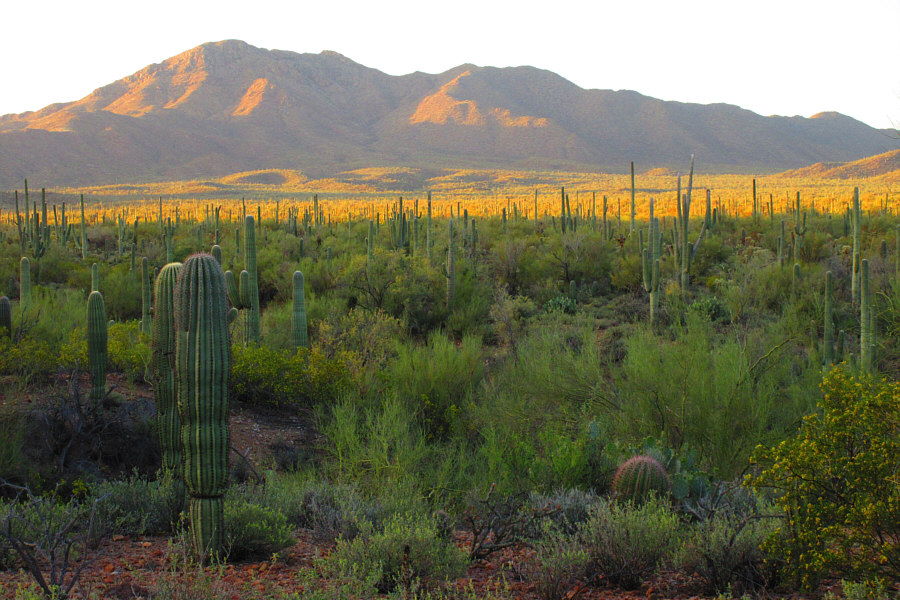 |
The morning sun illuminates
Wasson Peak
(left) to the south. Photo courtesy of Zosia Zgolak |
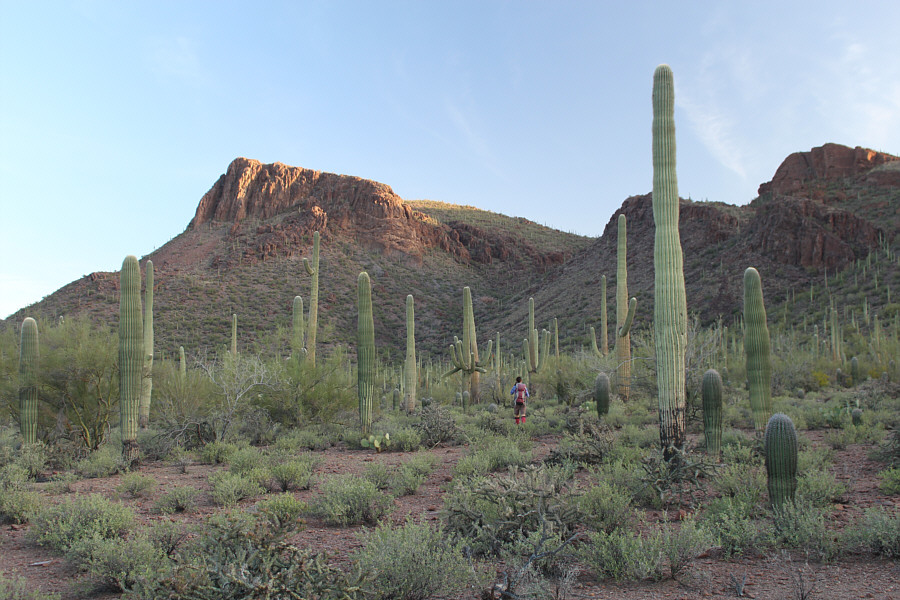 |
Zosia leaves the trail and makes a beeline toward the access gully. |
 |
Zosia finds a good trail going up the access gully. |
 |
Here is a close-up look at a jumping cholla whose segmented stems easily separate when an animal or person inadvertently brushes up against its barbed spines. |
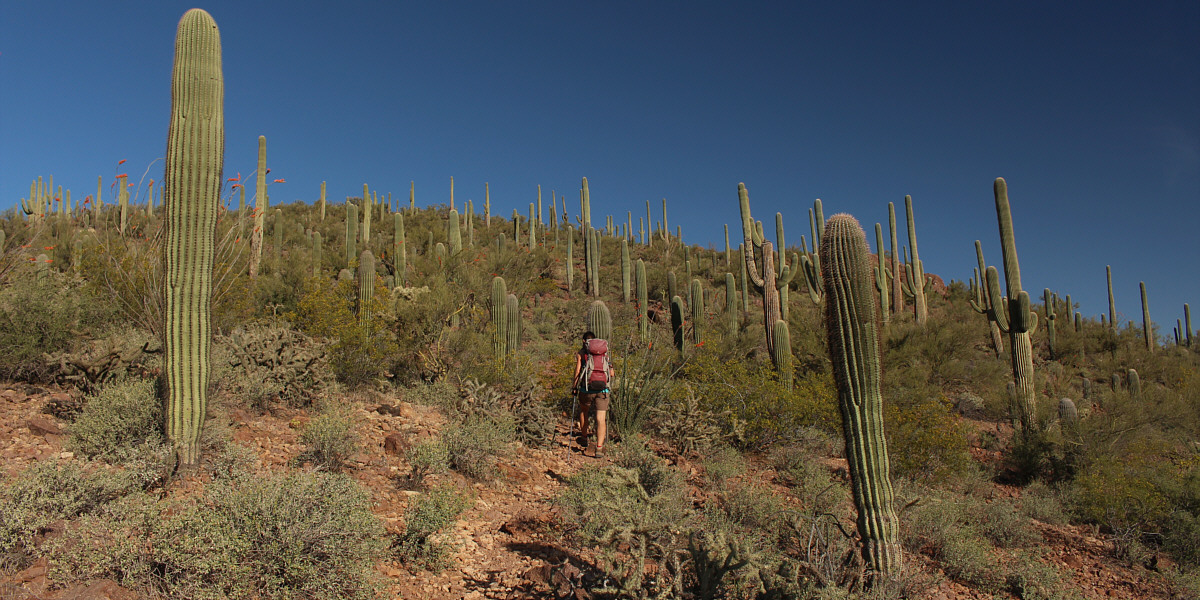
Zosia climbs up the final slope before the top of Panther Peak.
Temperatures were soaring by the time we started hiking up Hunter trail, and I was already feeling weary just from the heat. We got a bit of a reprieve from the hot sun as we climbed up along the shady base of Picacho Peak's north-facing cliffs. Unfortunately, we were back in the sun again for good once we reached a high saddle a little west of the summit. Strangely, the trail descends very steeply down the south side of the saddle before traversing to a junction with Sunset Vista trail which is a longer and probably less popular approach.
Beyond the junction, the trail resumes its climb to the summit, and there are at least three steep sections where cables and fencing (ie. via ferratas) have been installed to assist hikers who may be spooked by the surprising exposure at these locations. Overall, the via ferratas had the same feel as some amusement park rides, and I could not help thinking that the park might have saved itself (and hikers) a lot of work by simply building a single via ferrata going up the cliffs back near the high saddle.
In any case, Zosia and I reached the top of Picacho Peak without any
mishaps, but with the hot sun bearing down on us, we stayed only long
enough to snap a few photographs before retreating to a shady cliff just
below the summit to take a short break. Other than enduring sweltering
heat, our subsequent return trip via the same route was largely
uneventful.
Upon returning to our car, we drove to one of the park's campgrounds and
enjoyed a much-needed and refreshing shower before hitting the highway.

The summit provides an aerial view of the park's facilities at bottom. Newman Peak sits to the north across the I-10.
 |
Farm land and the Santa Catalina Mountains are the most remarkable features to the southeast. |
 |
An antelope squirrel appears to be curious about a couple of intruders
just below the summit. Photo courtesy of Zosia Zgolak |
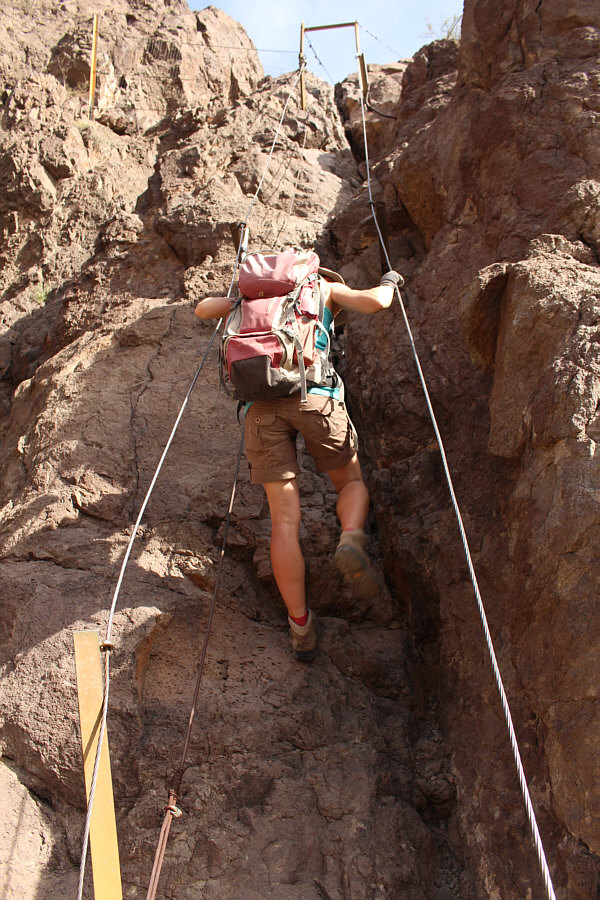 |
Zosia carefully descends the steep cliff band with the fixed cables. |
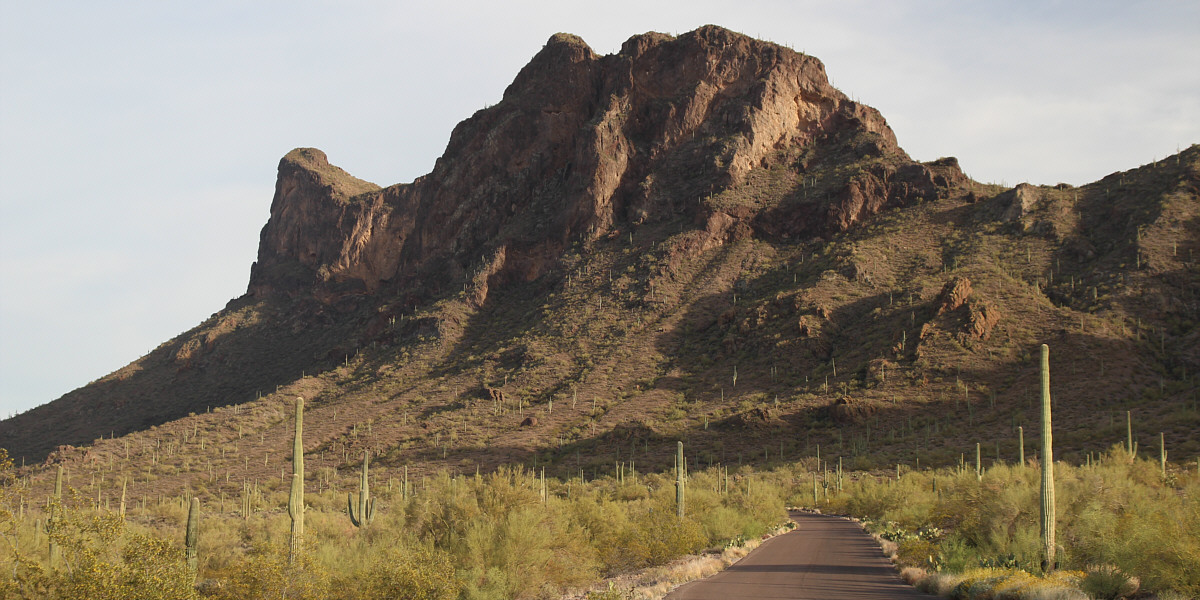
Here is a final look at Picacho Peak from near one of the campgrounds. The summit is on the far left.
